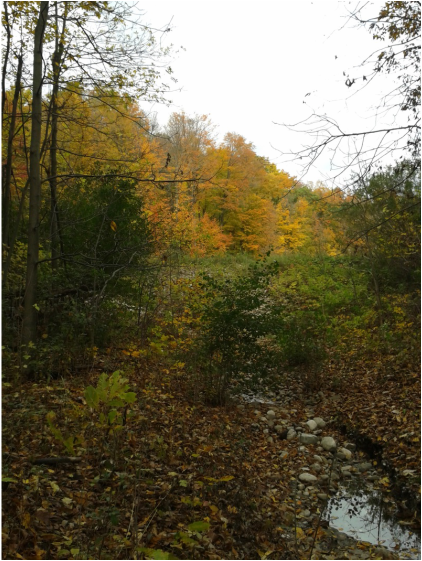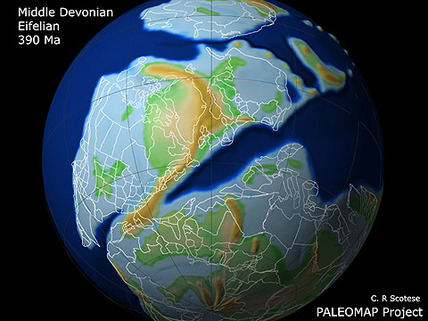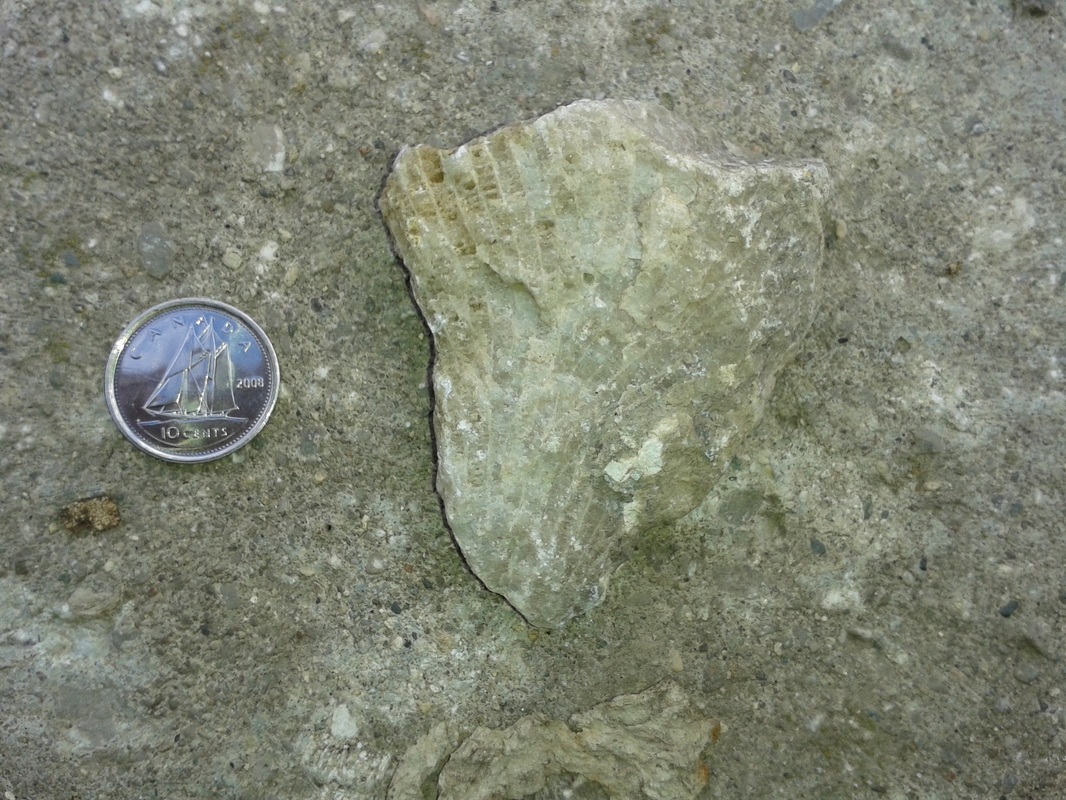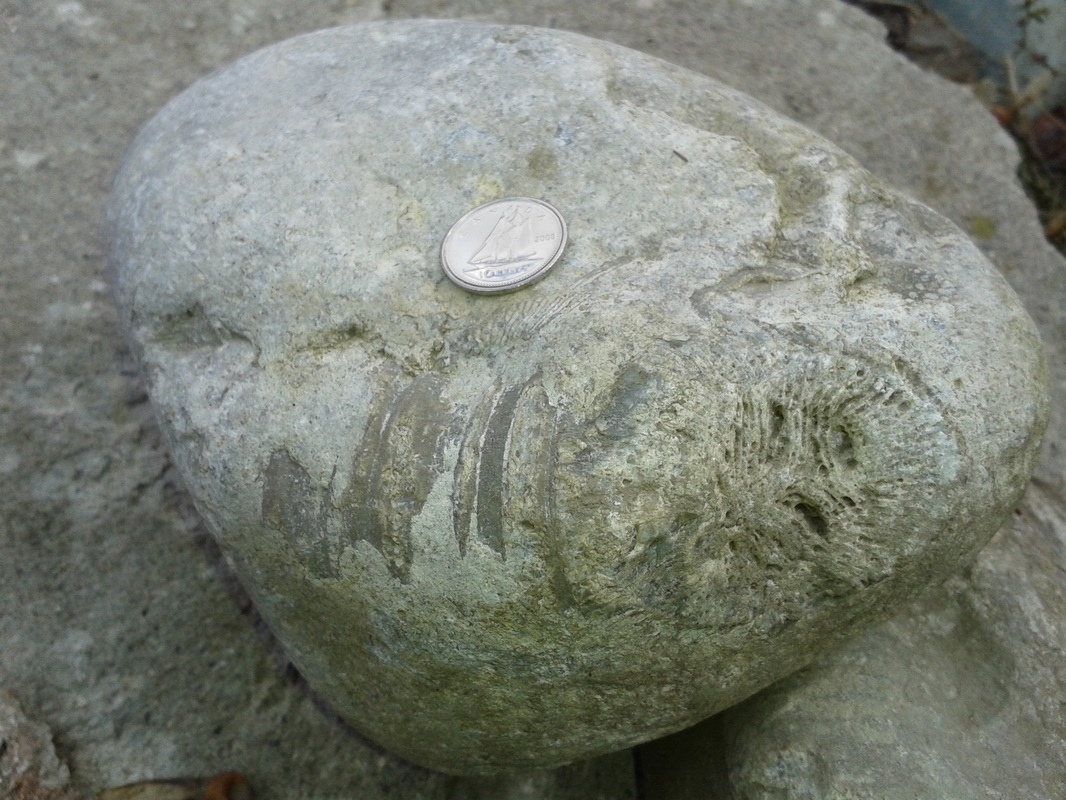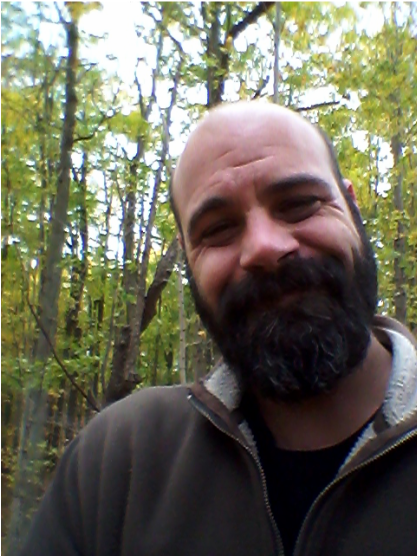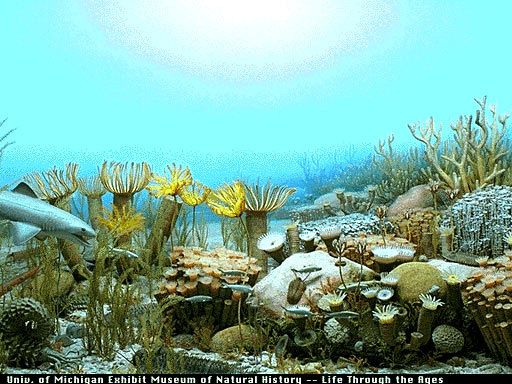OCT 24: SEASON 1, episode 2: let's explore the dundee formation (part 2)
Mid-autumn is, for me, the ideal time for walking in the woods and looking for fossils: the temperature is neither too hot nor too cold; the underbrush that smothered the rock outcrops has thinned; no being attacked by swarms of springtime blackflies or mosquitoes, and no angry pladges of September wasps.
Today I ventured deeper into the Boler Mountain forest, encountering a white tail deer, a heron, and generally enjoying the boughs of now golden maples. And, of course, what the camera can never capture: the unique smell of an autumn forest that (at least for me) is its own form of exquisite nostalgia.
Today’s journey was perhaps as minimally eventful on the fossil front as last time. The Dundee Formation is not exactly the most thrilling when it comes to discovering fossil flora and fauna. This contrasts with the real excitement when you know the Middle to Late Devonian story - but more on that below. I did, however, encounter some rugose coral (the horn-shaped fellows), and another little brachiopod. It seems thus far that this area is almost entirely dominated by rather large anthozoan colonies. The amount of reef-building during this time must have been mind-bogglingly spectacular, especially for those who study coral reefs today.
Today I ventured deeper into the Boler Mountain forest, encountering a white tail deer, a heron, and generally enjoying the boughs of now golden maples. And, of course, what the camera can never capture: the unique smell of an autumn forest that (at least for me) is its own form of exquisite nostalgia.
Today’s journey was perhaps as minimally eventful on the fossil front as last time. The Dundee Formation is not exactly the most thrilling when it comes to discovering fossil flora and fauna. This contrasts with the real excitement when you know the Middle to Late Devonian story - but more on that below. I did, however, encounter some rugose coral (the horn-shaped fellows), and another little brachiopod. It seems thus far that this area is almost entirely dominated by rather large anthozoan colonies. The amount of reef-building during this time must have been mind-bogglingly spectacular, especially for those who study coral reefs today.
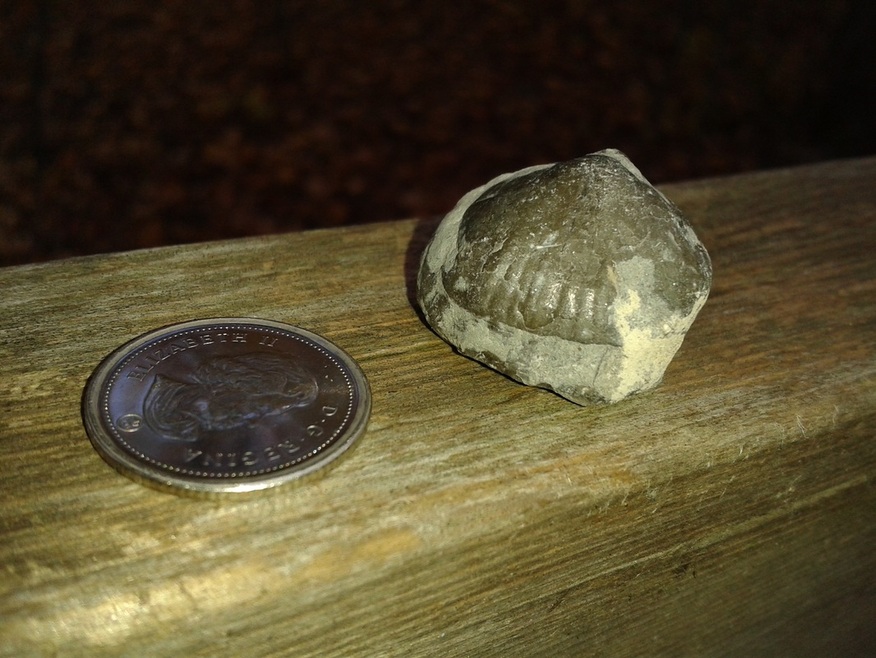
A tiny brachiopod (most likely schizophoria, and so a non-spiriferid brachiopod) next to a Canadian dime. Last week I neglected to bring any pocket change to show scale.
Apart from this, I did encounter some fairly interesting (to me) erosion patterns where water had cut deep fissures into the soil, and there is some bowl-effect in a few of the forested areas I tramped through.
Unless you are absolutely spellbound by endless outcrops of fossil corals, the Dundee Formation does not boast very much else with the exception of a few brachiopods - at least here in London.
In next week's episode, I will be taking my camera to campus to snap some pictures of fossils at Western (no, no, not the professors!). Stay tuned!
Apart from this, I did encounter some fairly interesting (to me) erosion patterns where water had cut deep fissures into the soil, and there is some bowl-effect in a few of the forested areas I tramped through.
Unless you are absolutely spellbound by endless outcrops of fossil corals, the Dundee Formation does not boast very much else with the exception of a few brachiopods - at least here in London.
In next week's episode, I will be taking my camera to campus to snap some pictures of fossils at Western (no, no, not the professors!). Stay tuned!
|
Click on the button to view the next instalment where I creep the fossils at Western without arousing any suspicion. From landscaped slabs to an arts building, we'll encounter our usual Dundee regulars like corals and a few brachiopods, but also some imported limestone sporting nautiloids and a few other oddities.
|
